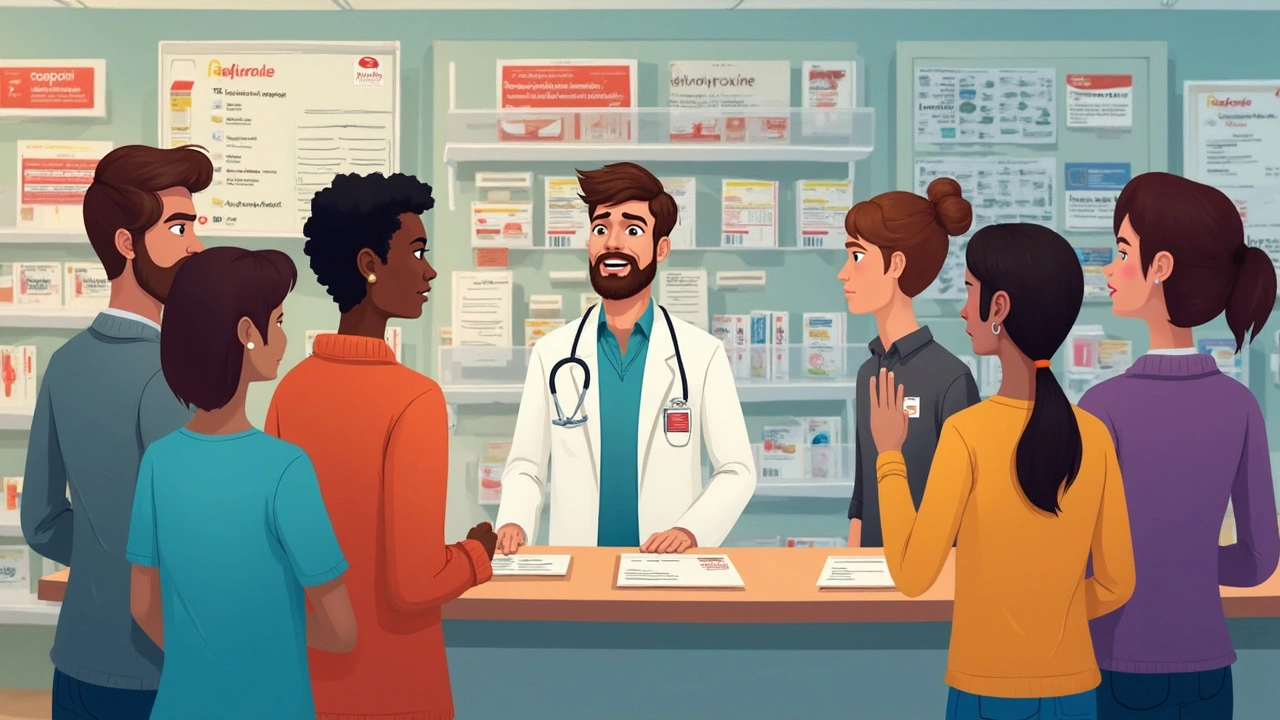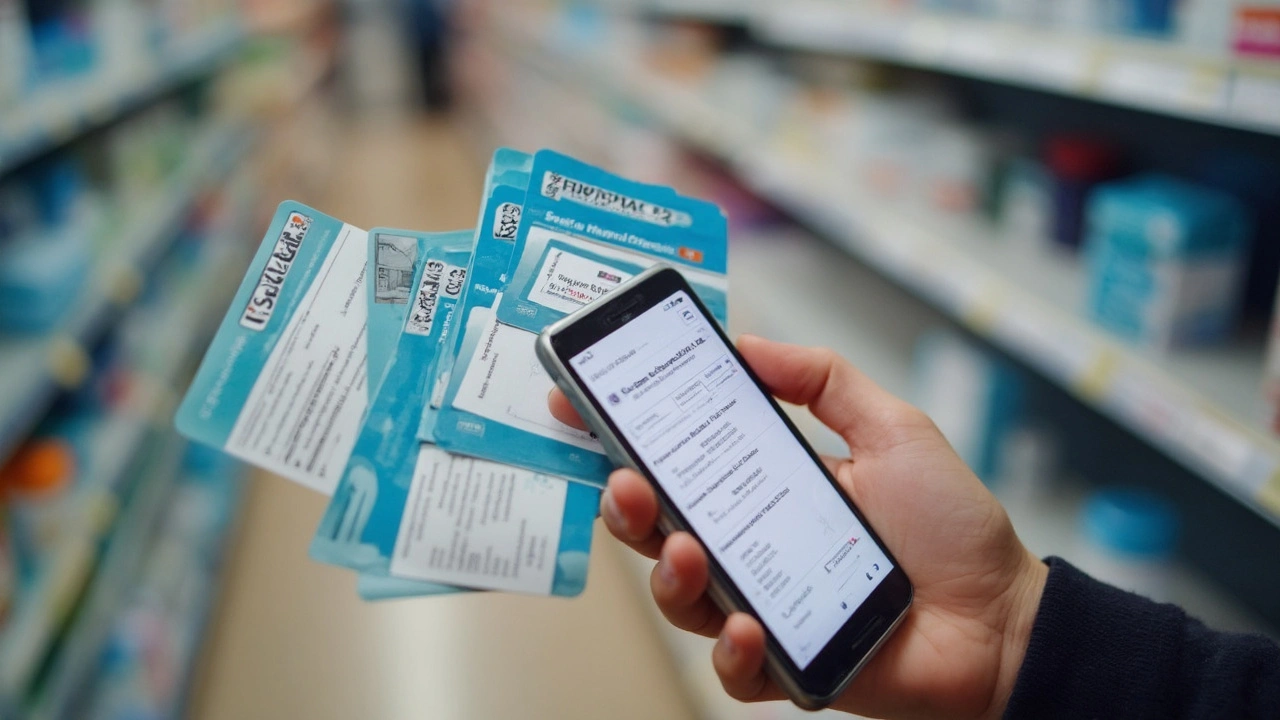Sick of watching your spending evaporate on basic medication? You’re not alone. Levothyroxine—the everyday lifeline for hypothyroidism—seems affordable, until you factor in rising prices, pharmacy markups, and the games insurance companies play. What if those TV commercials and coupons could actually work for you, no matter your insurance or income? Forget settling for the price on the bottle. There are tricks the pharmacy chains and online coupon sites don’t want you to know—ways to stack deals, hack your insurance plan, and outsmart the fine print for big savings, sometimes cutting your monthly cost by half or more.
The Real Cost of Levothyroxine: Why Prices Swing So Much
If you’ve grabbed levothyroxine or a brand like Synthroid in different pharmacies over the last few years, you’ve probably noticed wild price swings. A 2023 nationwide survey found single-month retail prices for generic levothyroxine ranged from $5 to $54, depending on where and how you bought it. Insurance plans love to shuffle their preferred brands, and every year (sometimes every quarter!) formularies change, throwing regular patients into confusion about what their next refill will cost.
Why does this happen? Pharmacies negotiate differently with drug wholesalers, generic suppliers flood the market one month and dry up the next, and your insurance contract might suddenly exclude a preferred brand for reasons you’ll never know. Even in Australia, the PBS keeps prices lower than the US, but private scripts and brand names can still hit the wallet hard, especially for those under 65 or with higher incomes who don’t qualify for full concessions. And when you look at online pharmacies, even more mysteries arise: the same bottle can sell for $6 or $46, depending on where you click.
A 2022 study published in JAMA Network Open showed that levothyroxine was among the top 10 drugs with the largest pharmacy price variation nationwide in the US—a trend that pops up in the UK and Australia too. This huge range means the price you pay depends less on the medication and more on how savvy you are.
So, is it worth jumping through hoops for savings? Let’s see just how much difference a few smart steps can make.
Mastering Coupon Stacking: How Different Programs Really Work
There’s a reason pharmacies give you long receipts: they want you to see their loyalty programs and coupon deals up close. But can you use all these deals for the same prescription? Here’s what’s true: most pharmacy and manufacturer coupons don’t usually play nice with each other or with insurance—at least not without a little hackery. That said, you can often stack a manufacturer coupon with a cash price coupon, or use online pharmacy coupons for a better deal at checkout. The devil’s in the details—some coupons only work for the brand name, while others are fine for generics.
Take the widely-used GoodRx coupons, for example. You’ll see different prices at each pharmacy, sometimes with a 300% difference, even for identical drugs. If you’re insured, check if your out-of-pocket is higher than the “cash coupon” price—if so, the pharmacy must let you use the coupon instead (American law, and usually honored by Aussie pharmacists on private scripts—but ask first). Walgreens and Chemist Warehouse have their own price-match policies, but they don’t advertise it. Ask, and you may get the lowest in-store price matched to an online deal.
Here’s a wild fact: more than 60% of Americans with insurance could save more by not using it for routine generics, according to a NEHI survey from 2022. The same pattern’s creeping into Aussie pharmacies, especially on non-PBS scripts. Always compare your insurance copay to the online coupon rate. If the coupon’s cheaper, use it instead.
Ready to get tactical? Here’s the optimal coupon stacking sequence for thyroid meds:
- Find the best pharmacy cash price for your dose (check GoodRx, Chemist Warehouse, and Pharmacy Direct).
- Look for a manufacturer’s coupon or co-pay card if you want a brand (e.g., Synthroid offers them for private scripts).
- Check independent sites with rotating discounts; for example: check the current Synthroid coupon promotions that may beat local store prices.
- Ask the pharmacist if they’ll stack a local store loyalty discount on top—some quietly will, especially if they know you shop around.
A pharmacist I trust in Melbourne told me, “When a customer asks for our best cash price and then slides in a competitive online coupon, we’re allowed to honor the lower one. But don’t expect us to offer it unless you ask.”

Insurance Secrets: Bending Your Plan to Pay Less
Insurance sounds like it should be straightforward—pay a premium, get your meds at a set cost. Too bad it’s rarely that simple. Some plans cover only one brand, others force you onto generics, and nearly all will reject coverage for duplicate prescriptions (like weekly low-dose and daily high-dose fills of levothyroxine). And once your plan resets on January 1, all bets are off.
The USPS and Medicare data show almost 30% of patients don’t realize they’re on the insurer’s “highest tier” drug list for thyroid meds, hiking copays without warning. But you’re not stuck with their rates. Instead, you can legally game the system in a few overlooked ways:
- Split your scripts: ask your doctor for two smaller-dose bottles instead of higher-dose pills, if your insurance covers two 50mcg scripts for less than one 100mcg bottle.
- Request a 90-day supply (not a 30-day): insurance often waives or lowers the copay, saving you a chunk each quarter.
- Sync all your meds: many insurers offer “medication synchronization” discounts, where you get all refills at once—no more forgotten coupons either.
- Appeal to the exception process: if you have a medical reason for brand-name Synthroid, your GP can file a PA (prior authorization) and you can then use someone else’s coupon savings for side scripts.
- See if your insurer accepts “secondary coverage” from employer-funded programs or even a patient assistance card—double-dipping is rare, but legal when disclosed.
Here’s a look at how different refill strategies can change your out-of-pocket based on real Aussie private plan data from 2024:
| Refill Scheme | Monthly Cost (AUD) | Total Savings vs. Standard |
|---|---|---|
| Standard 30-day fill, generic | $27 | — |
| 90-day fill, generic + online coupon | $14 | $117/year |
| Brand name + manufacturer coupon | $20 | $84/year |
| Two scripts of smaller doses (split fill) | $12 | $180/year |
See what a difference a few tweaks make? One well-timed coupon or script split could mean the difference between a $324 and $144 yearly bill.
The Overlooked Tricks: Patient Assistance, Loyalty Programs, and More
The obvious coupon tools only scratch the surface, especially if you’re facing gaps in coverage, job changes, or unlucky timing with insurance resets. Here’s where patient assistance and off-the-beaten-path perks come into play.
Pharmaceutical companies, especially for brand names like Synthroid, offer direct patient assistance programs—sometimes you can get your script filled at zero cost for a year, even if you have partial coverage. Pharmacies like Chemist Warehouse, TerryWhite, and Lloyds offer secret shopper discounts and periodic “health club” price breaks—sign up for their email, and you’ll get codes not usually listed in-store.
Even more overlooked: unions, professional associations, and chronic disease non-profits frequently offer medication relief programs. A 2024 poll by Thyroid Australia found about 18% of patients cut their medication costs by at least 25% through charities, group plans, or public hospital outpatient scripts.
Don’t ignore the local! Rural pharmacies—especially in Victoria and NSW—sometimes undercut city chain prices by 15-40%, no coupon required, just for asking. A 2023 comparison by CHOICE magazine found small-town chemists in regional Victoria often offered better base prices than their big-city cousins, especially if you volunteered that you’d shopped around.
Last, check if your GP can write scripts to maximize repeat fills. In Australia, private scripts can be written for a 12-month supply at once, letting you use a coupon or discount from day one.

Online Pharmacies, International Options, and the Risks to Watch
Online pharmacies are a gift and a gamble at the same time. The upside? Massive price cuts—sometimes you’ll find levothyroxine for half the local pharmacy price, and delivery right to your door. The risk? Not every “online” pharmacy is legitimate. Stick to accredited sites, and cross-check with the Therapeutic Goods Administration (TGA) or the US FDA’s online pharmacy checker tool for legit sources.
Some online platforms—especially in the US and Europe—let you buy the full brand-name or generic version with deep discounts. If you look for a current Synthroid coupon, you may save 40% on your next fill, as reported by savvy shoppers in East Melbourne last summer. The catch? Check shipping timelines (plan ahead by a month), verify the source, and always check batch expiry dates on arrival.
Here’s a tip: local Aussie online pharmacies (like Pharmacy Online and InstantScripts) issue digital scripts eligible for discounts, but never follow links from spam emails. Use known marketplaces or direct pharmacy sites. And if you travel, bring enough supply plus a copy of your script—international mail can get caught in customs, leaving you in a bind if you need quick access.
Now, about mixing and matching coupons and insurance across borders—don’t. Most online coupons and assistance programs are region-locked. Always check the country allowed in the fine print. If you hit a snag, ask the pharmacist—they know which coupons actually work for cross-border refills or returning expats.
"Patients who compare at least three pharmacies—online, chain, and local—almost always pay less for thyroid medication. Loyalty pays, but only if it’s your wallet, not the pharmacy’s."
—Dr. James Donnelly, Endocrinologist, University of Sydney Medical School
The bottom line? The game is rigged, but the rules bend for those who do their homework. Keep an eye on the pharmacy’s bottom line, not yours. With just a little effort, you’ll find that the real secret isn’t in the pills—it’s in knowing which tactic, coupon, or program to use at the right time. Didn’t think a prescription could feel like winning the lottery? Try it, and see how much you can save this year on your next bottle of levothyroxine.






If you’ve ever stared at a pharmacy receipt and felt like you were being ripped off, you’re not alone. The price tags on levothyroxine can swing wildly depending on where you shop, and most people never realize they have the tools to tame that volatility. First, always start by comparing the cash price on GoodRx, Walmart, or local chains; you’ll often find the out‑of‑pocket cost is lower than the copay your insurer charges. Next, grab a manufacturer coupon for Synthroid or a generic co‑pay card – they’re free, just a quick sign‑up on the drug’s website. Then, ask the pharmacist if they’ll honor the lower cash price you found online; many will if you politely request a price‑match. Don’t forget to split your prescription into two smaller bottles if your plan’s tiering rewards lower‑dose packs – this can shave off another few dollars per month. A 90‑day supply is another classic hack; insurers typically waive the copay or give a bulk discount that dwarfs the monthly fee. If you have secondary coverage from an employer or a union health plan, you can often double‑dip legally by using the primary insurer first, then the secondary for the remaining balance. For brand‑name fans, a patient assistance program can sometimes cover the entire cost for a year, especially if you have a documented financial need. Rural pharmacies in many states also love to undercut city chains, so a quick phone call can net you a hidden discount. Finally, set up a recurring reminder to re‑check prices every quarter – manufacturers update coupons, and pharmacy contracts shift, meaning a new saving could appear any time. By stacking these strategies, you can realistically cut your levothyroxine bill by 40‑60 % and keep more cash for the things you actually enjoy.